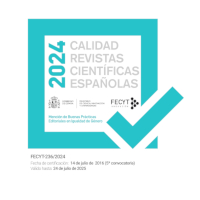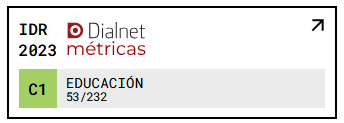Elementary male and female teacher training in Spain at the ending of XIX century. The case of Geometry
DOI:
https://doi.org/10.18172/con.2837Keywords:
Geometry, XIX century, elementary education, school teaching, gender discriminationAbstract
During XIX century in Spain, gender discrimination of boys and girls was a practice that extended to the training of prospective teachers of elementary education. In this paper, we analyze these differences studying the legislation at that time. Then we focus on the case of Geometry. In particular, we analyze two textbooks addressed to prospective teachers and we conclude that there were no differences at a mathematical level, but regarding applications and pedagogical training. Nevertheless, those textbooks contributed to perpetuate the passive and secondary role of women by means of philosophical commentaries.Downloads
References
Ávila, A. (2007). La formación de los maestros en España: una deuda histórica. Historia de la educación: Revista interuniversitaria, 26, 327-340.
Ballarín, P. (2004). Género y políticas educativas. XXI Revista de Educación, 6, 35-42.
Barceló, J., y Luis, V. de (1895). Nociones de Geometría con aplicaciones a las labores y corte de prendas. Madrid: Saturnino Calleja.
Cerezo, J. F. (1986). Componentes ideológicos de la formación de maestros en Castilla- León (1900-1936). Historia de la educación: Revista interuniversitaria, 5, 401-414.
Del Amo, M. C. (2009). La educación de las mujeres en España: de la “amiga” a la universidad. CEE Participación Educativa, 11, 8-22.
Escolano, A. (1997). Introducción. En A. Escolano (coord.), Historia ilustrada del libro escolar en España: del Antiguo Régimen a la Segunda República (pp. 13-17). Madrid: Pirámides.
Escolano, A. (1996). Memoria de la formación de maestros. Aula, 8, 311-327.
Ferrer, P. (1893). Tratado de la legislación de primera enseñanza vigente en España (séptima edición). Madrid: Librería de la viuda de Hernando y Cª.
Gómez, P. (2002). Análisis didáctico y diseño curricular en matemáticas. Revista EMA, 7(3), 251-292.
Maz, A., y Rico, L. (2015). Principios didácticos en textos españoles de matemáticas en los siglos XVIII y XIX. Revista Latinoamericana de Investigación en Matemática Educativa, 18(1), 49-76.
Picado, M., y Rico, L. (2011). Análisis de contenido en textos históricos de matemáticas. PNA, 6(1), 11-27.
Pitaluga, V. (1895). Geometría y Agrimensura. Madrid: Saturnino Calleja.
Pitaluga, V. (1896). Aritmética y Nociones de Álgebra. Madrid: Saturnino Calleja.
Schubring, G. (1987). On the methodology of analysing historical textbooks: Lacroix as textbook author. For the Learning of Mathematics, 7(3), 41-51.
Vega, L. (1985). Las corrientes pedagógicas europeas a la luz del movimiento normalista español del siglo XIX. Historia de la educación: Revista interuniversitaria, 4, 119-138.
Vega, L. (1986). La eficacia interna de la formación de maestras en el siglo XIX. Historia de la educación: Revista interuniversitaria, 5, 235-250.
Downloads
Published
How to Cite
Issue
Section
License
The authors retain copyright of articles and authorize Contextos Educativos. Revista de Educación the first publication. They are free to share and redistribute the article without obtaining permission from the publisher as long as they give appropriate credit to the editor and the journal.
Self-archiving is allowed too. In fact, it is recommendable to deposit a PDF version of the paper in academic and/or institutional repositories.












